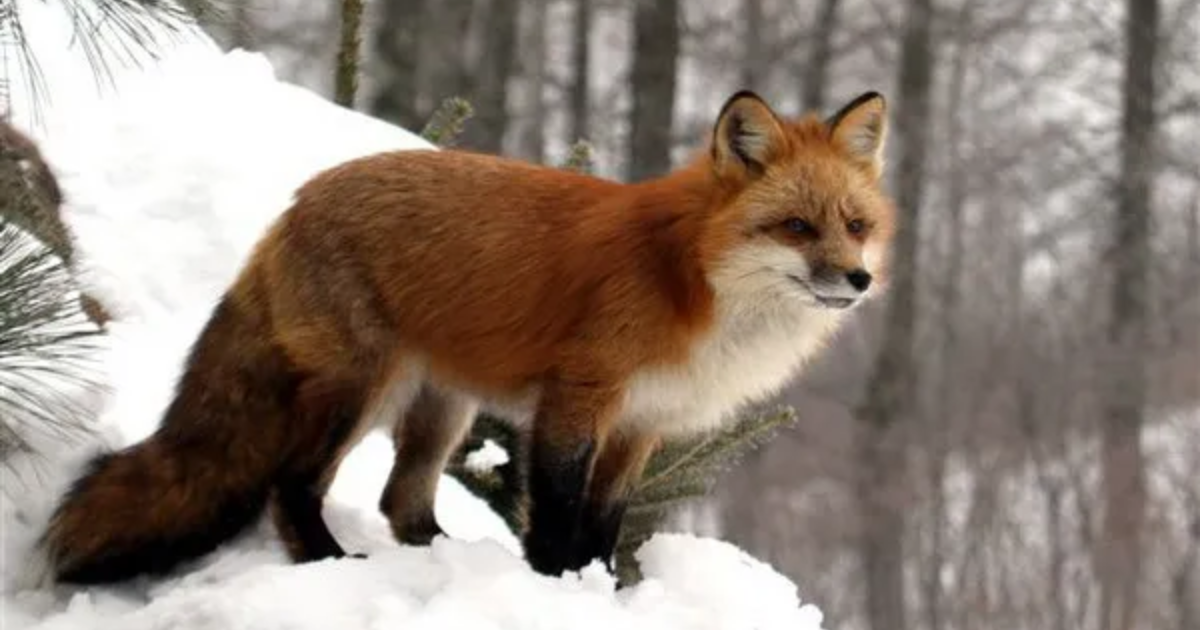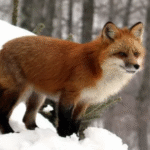The red fox (Vulpes vulpes) is one of the most widespread and adaptable mammals in the world. Known for its cunning nature, striking appearance, and remarkable intelligence, the red fox thrives in diverse environments, from remote wilderness to urban centers. As a master of adaptation, the red fox has earned its place as a prominent figure in ecosystems across the Northern Hemisphere. In this article, we explore the behavior, habitat, diet, and survival strategies of this fascinating species, and examine its vital role in maintaining ecological balance.
Overview of the Red Fox

What is a Red Fox?
The red fox is a medium-sized canid recognized by its reddish-orange fur, bushy tail with a white tip, and black legs and ears. It is the largest species of the true foxes and is found across North America, Europe, Asia, and even parts of North Africa and Australia (as an introduced species).
Physical Characteristics
- Length: 18 to 35 inches (body), 12 to 21 inches (tail)
- Weight: 6 to 15 pounds
- Coloration: While red is the most common, some red foxes exhibit color variants such as silver, black, or cross (a mix of red and black)
Habitat and Global Distribution
Where Do Red Foxes Live?
Red foxes are highly adaptable and inhabit a wide range of environments including:
- Forests
- Grasslands
- Mountains
- Deserts
- Arctic tundra
- Urban areas
They construct dens or use burrows made by other animals. In urban environments, they often find shelter in parks, under decks, or in abandoned buildings.
Global Range
Red foxes have the widest distribution of any carnivore species. They are native to the Northern Hemisphere but have been introduced to Australia, where they are considered invasive due to their negative impact on native wildlife.
Behavioral Traits of Red Foxes
Solitary Yet Strategic
Red foxes are primarily solitary animals. Unlike wolves or coyotes, they do not form packs. Instead, they hunt alone, relying on stealth and patience.
Communication and Senses
Red foxes use vocalizations, scent marking, and body language to communicate. Their keen senses of smell, sight, and hearing make them highly effective hunters and allow them to detect threats with ease.
Diet and Hunting Strategies
Omnivorous Diet
Red foxes are opportunistic feeders with a diet that includes:
- Small mammals (mice, voles, rabbits)
- Birds and eggs
- Insects and worms
- Fruits and berries
- Carrion
- Human scraps (in urban areas)
Hunting Techniques
Foxes often use a unique hunting method known as “mousing,” where they pounce high into the air and land directly on their prey. In snowy conditions, they may use the Earth’s magnetic field to align and locate prey beneath the snow.
Adaptability in Changing Environments
Urban Survival
Red foxes are increasingly common in cities, where they scavenge for food in garbage bins, gardens, and alleyways. They have adapted their activity patterns to avoid humans, becoming more nocturnal in densely populated areas.
Seasonal Adaptations
Red foxes grow thicker fur during the winter to withstand cold temperatures and shed it in the warmer months. Their diet also shifts with the seasons depending on food availability.
Reproduction and Lifespan
Breeding Season
Red foxes typically breed once a year, with mating occurring in winter. The female (vixen) gives birth to a litter of 4 to 6 kits in the spring after a gestation period of about 52 days.
Raising the Kits
Both the vixen and male (dog fox) contribute to raising the young. Kits stay in the den for several weeks before beginning to explore the surroundings. By autumn, they become independent.
Lifespan
In the wild, red foxes live 2 to 5 years, although some may reach up to 10 years. In captivity, they may live longer due to lack of predators and consistent food.
Role in Ecosystems

Predator and Prey Balance
Red foxes help control populations of rodents and other small mammals, contributing to ecological balance. By preying on insects and scavenging carrion, they also support decomposition processes.
Seed Dispersal
Through the consumption of fruits and berries, red foxes assist in seed dispersal, aiding in plant propagation and biodiversity.
Keystone Species Potential
In some ecosystems, red foxes function similarly to keystone species by influencing the population dynamics of multiple organisms and preventing outbreaks of certain species.
Threats to Red Foxes
Natural Predators
Although adult red foxes have few predators, they may fall prey to:
- Wolves
- Coyotes
- Eagles
- Humans (through hunting or vehicle collisions)
Habitat Destruction
Urban development, agriculture, and deforestation reduce available habitat and den sites, forcing foxes into closer contact with humans and domestic animals.
Disease
Red foxes can be carriers of diseases like rabies, mange, and canine distemper, which can affect both wildlife and domestic pets.
Human Interaction and Cultural Significance
Folklore and Mythology
Red foxes are prominent in many cultures, often depicted as cunning, intelligent tricksters or spiritual messengers. From Native American stories to Japanese kitsune legends, they symbolize adaptability and mystery.
Human-Wildlife Conflict
In rural areas, red foxes may prey on livestock such as chickens, causing conflict with farmers. However, education on fox behavior and non-lethal deterrents can reduce such conflicts.
Conservation and Protection
Red foxes are not considered endangered globally, but their status varies regionally. In areas where they are invasive, like Australia, control measures are in place to protect native species.
The Red Fox and Climate Change
Expanding Range
As global temperatures rise, red foxes have expanded their range northward, encroaching into Arctic habitats and competing with the native Arctic fox for food and territory.
Adaptability as a Strength
The red fox’s ability to alter its diet, behavior, and habitat preferences makes it one of the most resilient mammals in the face of environmental change.
Also Read : The Role Of Grizzly Bears In Ecosystems: Guardians Of The Forest
Conclusion
The red fox exemplifies nature’s ability to adapt, survive, and thrive across continents and climates. Its intelligence, versatility, and ecological role make it a vital part of the natural world. Whether living in forests or city alleys, the red fox continues to fascinate scientists, storytellers, and wildlife enthusiasts alike. As we learn to better coexist with these creatures, we also gain a deeper understanding of the ecosystems they help support and the balance they maintain.
FAQs
Are red foxes dangerous to humans?
Red foxes are generally shy and avoid humans. They are not considered dangerous, but as with all wild animals, it’s best not to approach or feed them.
What do red foxes eat in urban areas?
In cities, red foxes eat garbage, pet food, rodents, birds, and fruit. They adapt their diet based on available resources.
How do red foxes communicate?
They use vocalizations (such as barks and screams), scent marking, and body language to communicate with one another and establish territory.
What is the difference between a red fox and a gray fox?
Red foxes have reddish-orange fur and a white-tipped tail. Gray foxes are grayer in color and can climb trees, which red foxes typically do not.
Are red foxes protected by law?
In many countries, red foxes are considered game animals and can be hunted or trapped in certain areas. Their protection status depends on regional regulations and whether they are native or invasive.





